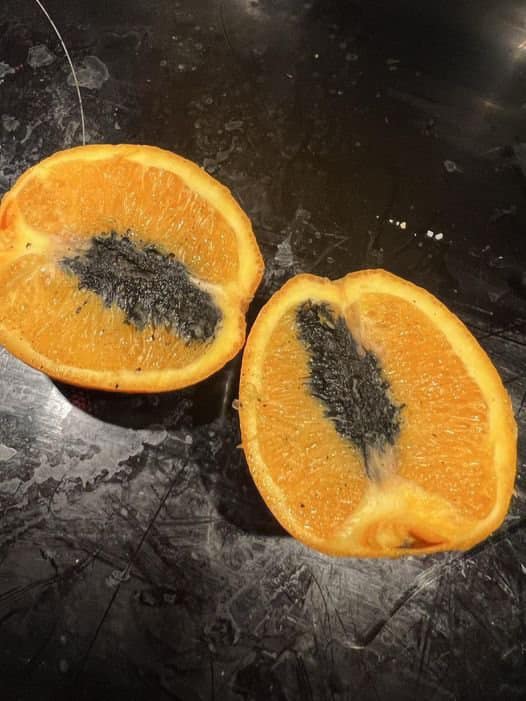ADVERTISEMENT
Have you ever sliced a juicy orange to find an unexpected black spot inside? Recently, a curious owner shared a picture of such an orange in a group of home tips on Facebook, which sparked a lively discussion. The orange had a strange black spot and a mysterious thing inside, which made the owner perplexed.
One
Further examination revealed that the dark substance inside the orange was a type of fungus or mould. This discovery raised an important question: Is it safe to eat an orange with a black interior?
The verdict
The short answer is no. Although it may be tempting to keep parts undamaged, caution should be exercised with mould due to potential health risks.
The challenge of identifying mould It is difficult to identify
Mould only visually. Different types of mould come in different colours, textures and patterns, making it difficult for an uninformed eye to make an accurate diagnosis. In this case, the black spot on the orange clearly indicated the development of mushrooms.
Mould and its environment
Mould develops in wet and humid conditions, and fruits such as oranges offer an ideal environment. Spores can penetrate into the skin of the fruit and multiply indoors, creating a habitat that is conducive to potential health hazards. Some moulds produce mycotoxins, which pose a serious health risk when ingested.
Continued on the next page
ADVERTISEMENT
